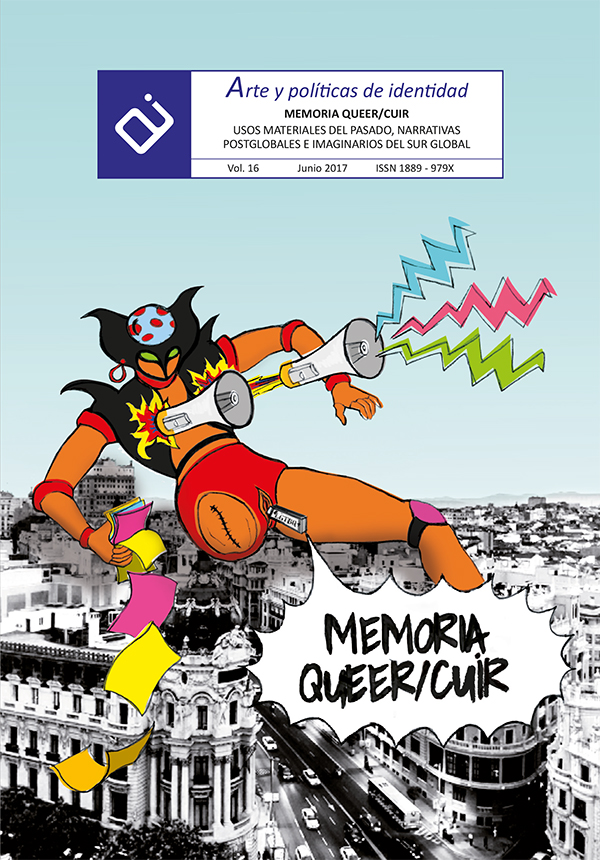Sexual Dissidence and Feminist Documentary Video in the 1970s
the Brazilian Filmmakers Rita Moreira and Norma Bahia Pontes Are Pioneers in Denouncing Female Oppression and Lesbian Invisibility
Abstract
In this artcle I will analyze three works by flmmakers Rita Moreira and Norma Bahia Pontes, who during the 1970s decided to setle in New York. In this city, they were directly involved with the American Women Liberaton Movement, making pieces commited to feminist militancy. In these productons, Moreira and Bahia Pontes reveal the homophobia, the stereotypes of beauty and the gender norms imposed on women. Their documentaries set precedent on the issue of lesbian visibility within the New York movement and within feminist movements in general and Brazilian feminism in partcular. Also, these works are pioneers in the feld of the cuir art. Back in Brazil, at the end of the 1970s, they contnued with works of feminist commitment, generatng references for the historiography of the independent documentary video of the Southern Cone.
Downloads
-
Abstract671
-
PDF (Español (España))677
References
Bessa, K. (2015). Un teto por si mesma. Multidimensões da imagem-som sob uma perspectiva feminista-queer. ArtCultura,30, 67-85.
Borges, J. V. (2008). Leituras feministas no Brasil e na Argentina: circulações e apropriações. En C. Scheibe Wolff (Ed.) Fazendo Gênero 8. Corpo, Violência e Poder (1-7). Florianópolis: Universidade de Santa Catarina.
Buarque de Holanda, H. y Herkenhoff, P. (2006). Manobras radicais. São Paulo: Centro Cultural Banco do Brasil.
Cottingham, L. (2000). Seeing through the Seventies. Essays on Feminism and Art. Amsterdam: G+B Arts International.
de Fáveri, M. (2014). ’O mundo é das mulheres’. Heloneida Studart e o feminismo na revista Manchete. Ártemis, 1, 103-115.
de Souza Bueno Mosqueira, D. (2015). ‘Então chegamos’: representações do feminino nas páginas d’O Lampião da Esquina (1978-1981). Albuquerque – revista de história, 13, 25-43.Filmforum Nairobi/ Embrafilme/Ministério de Cultura.Fortaleza: Expressão Gráfica e Editora.
Fonteles Duarte, A. R. (2005). Carmen da Silva: O feminismo na imprensa brasileira.
Fonteles Duarte, A. R. (2007). A escrita feminista de Carmen da Silva. Caderno Espaço Feminino, 17, 197-217.
Foro Nairobi (1985). Brazilian Women in the Movies/Mulheres de Cinema. São Paulo,
Machado, A. (Ed.). (2007). Made in Brasil: três décadas do vídeo brasileiro. São Paulo: Iluminuras.
Peccinini, D. (1985). Moreira, Rita. En Arte. Novos meios | multimeios. Brasil ’70 | ’80 (pp. 295-296). São Paulo: Museu de Arte Brasileira.
Pedro, J. M. (2006). Narrativas fundadoras do feminismo: poderes e conflitos (1970-1978). Revista Brasileira de História, 52, 249-272.
Moreira (2016). Entrevista realizada por la autora a Rita Moreira en São Paulo.
Moreira (2017). Comunicación personal de la autora con Rita Moreira.
Muraro, R. M. (1966). A mulher na Construção do Mundo Futuro. Petrópolis: Vozes.
Rubin, G. (1975). The Traffic in Women: Notes on the ‘Political Economy’ of sex. En Reiter, R. (Ed.) Towards an Anthropology of Women. New York: Monthly Review Press.
Santos Soares, G. y Carneiro Costa, J. (2012). Movimento lésbico e Movimento feminista no Brasil: recuperando encontros e desencontros. En Labrysétudes féministes/ estudos feministas. Revisado el 3 de mayo, 2017, de https://www.labrys.net.br/labrys20/brasil/gilberta%20jussara.htm
Sobrinho, G. (2014). Vídeo e televisão independentes no Brasil e a realização de documentários. Lumina, 8, 1-23.Studart, H. (1975). O mundo é das mulheres. En Manchete (5 de julho). 10-11.
Studart, H. (1975). Ano Intenacional da Mulher. En Manchete (18 de janeiro). 26-27.Studart, H. (1976). Mulher. Objeto de Cama e Mesa. Petrópolis: Vozes.
Trizoli, T. (2012). Crítica de arte e feminismo no Brasil dos anos 60 e 70. En Monteiro, R. H., Rocha, C. (ed.) Anais do V Seminário Nacional de Pesquisa em Arte e Cultura (pp. 467-481). Visual Goiânia. Goiânia: UFG.
Wolverton, T. (2002). Insugent Muse. Life and Art at the Woman’s Building. San Francisco: City Lights.
Works published in this journal are subject to the following terms:
- The Service of Publications from the University of Murcia (publishing house) keeps the published works’ copyrights, and favors and allows the reuse of these works under the license indicated in point 2.
- Works are published in the journal’s online edition under the license Creative Commons Reconocimiento-NoComercial-SinObraDerivada 3.0 España(texto legal). They can be copied, used, disseminated, transmitted and publicly exhibited, as long as: i) the author and original source of publication are cited (journal, publishing house and work’s URL); ii) they are not used for commercial purposes; iii) the existence and specifications of this license are mentioned.
3. Conditions for auto-file. It is allowed and encouraged that authors share electronically their pre-print version (the pre-reviewed version) and /or post-print version (the reviewed and accepted version) of their Works before the publication, since it promotes its circulation and dissemination. RoMEO color: green.










